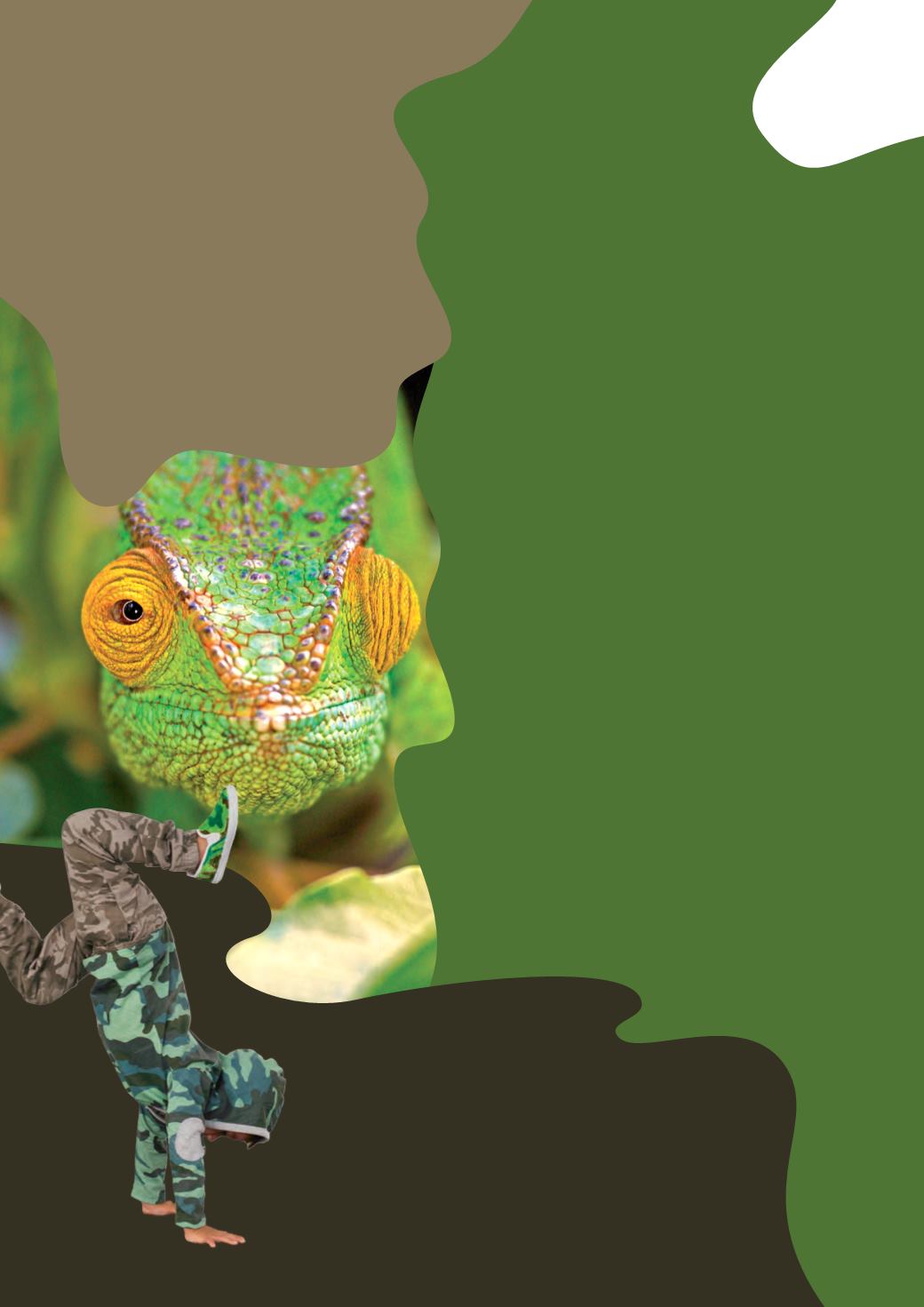
DID YOU KNOW?
Animals, like this chameleon, use camouflage to
become invisible
, to either hide from predators or
sneak up on prey. They may have colours and patterns
that make them look like things in their natural habitat,
such as leaves, rocks, snow, flowers or seaweed. Even the
most brightly coloured animals, like rainbow lorikeets,
can make themselves disappear by blending into the
background or with each other.
Dressing in
camouflage
Camouflage is not just for
animals!
Thayer experimented
with patterned cut-outs of bird,
snake and human forms to show
how having a few mottled colours
was more effective camouflage than
having just one colour. He was the
first to suggest that soldiers’ single-
coloured uniforms should be changed
to camouflage patterns.
Australian zoologist William Dakin
was Technical Director of Camouflage
during World War Two. Observing the
way colour protected certain animals,
he suggested that soldiers could blend
into their surroundings by wearing
grey, dark green and khaki uniforms.
Some soldiers’ camouflage gear mimics
animal patterns.
In the Vietnam–
American War, American and South
Vietnamese soldiers wore uniforms
patterned with tiger-like stripes.
All about
camouflage
About 100 years ago, American
artist Abbott Thayer, known
as the ‘father of camouflage’,
explored the way the colours of
feathers, scales and fur
allowed
animals to
blend into their
environment
. He believed that
nature was a great artist!
14


